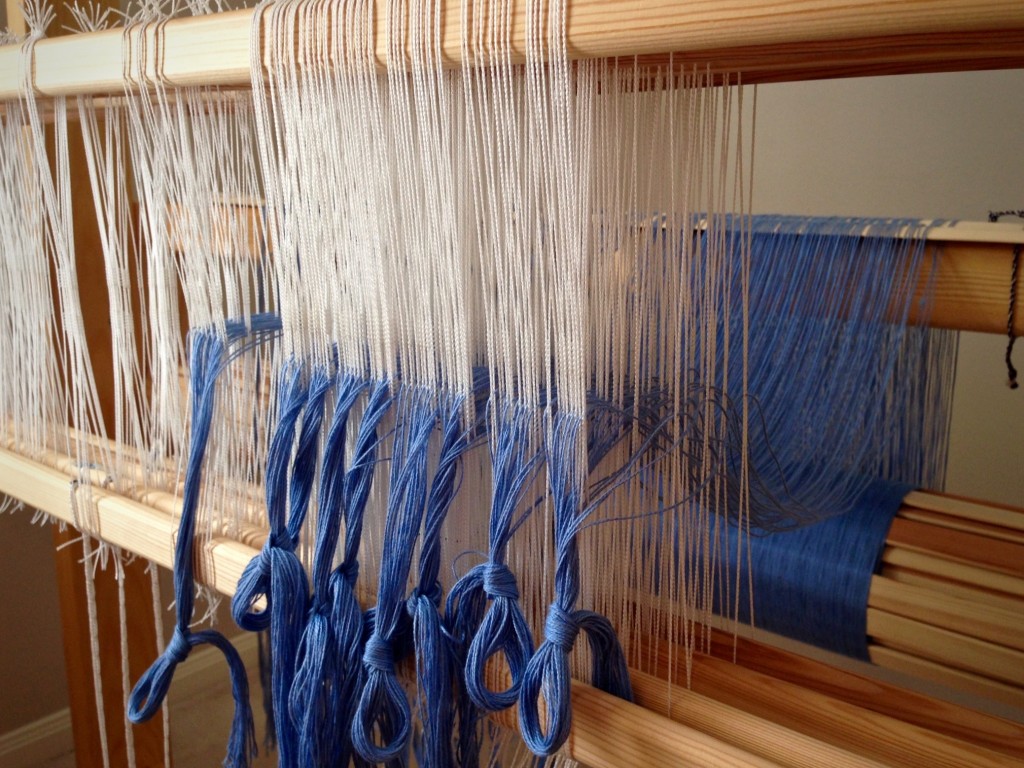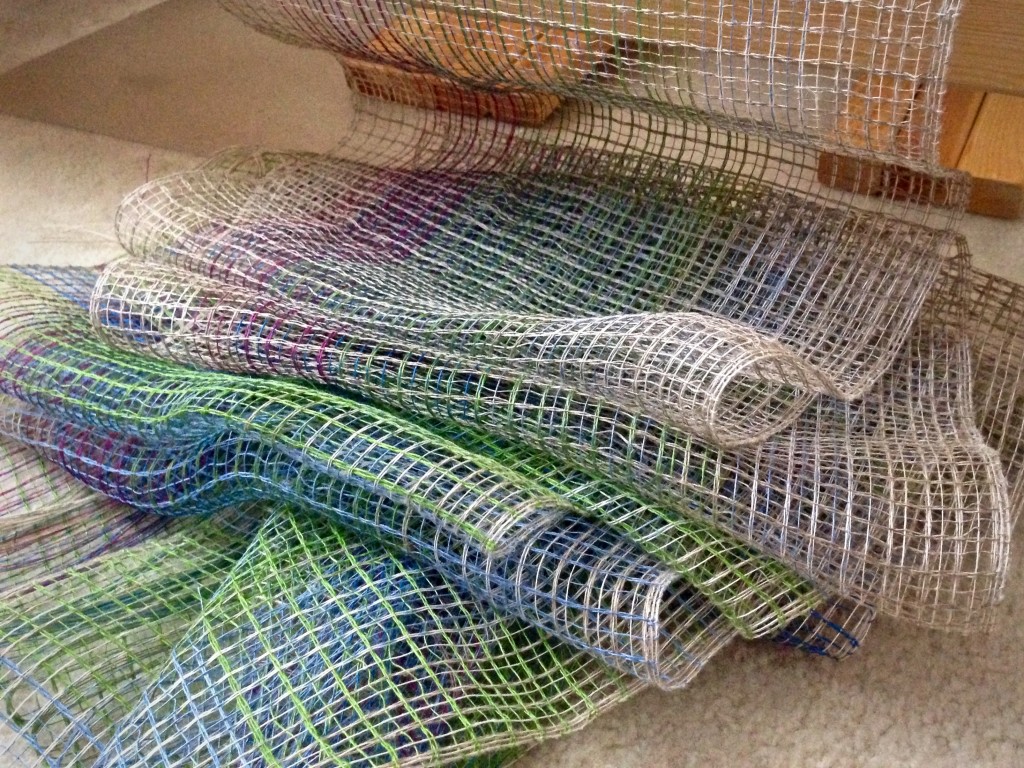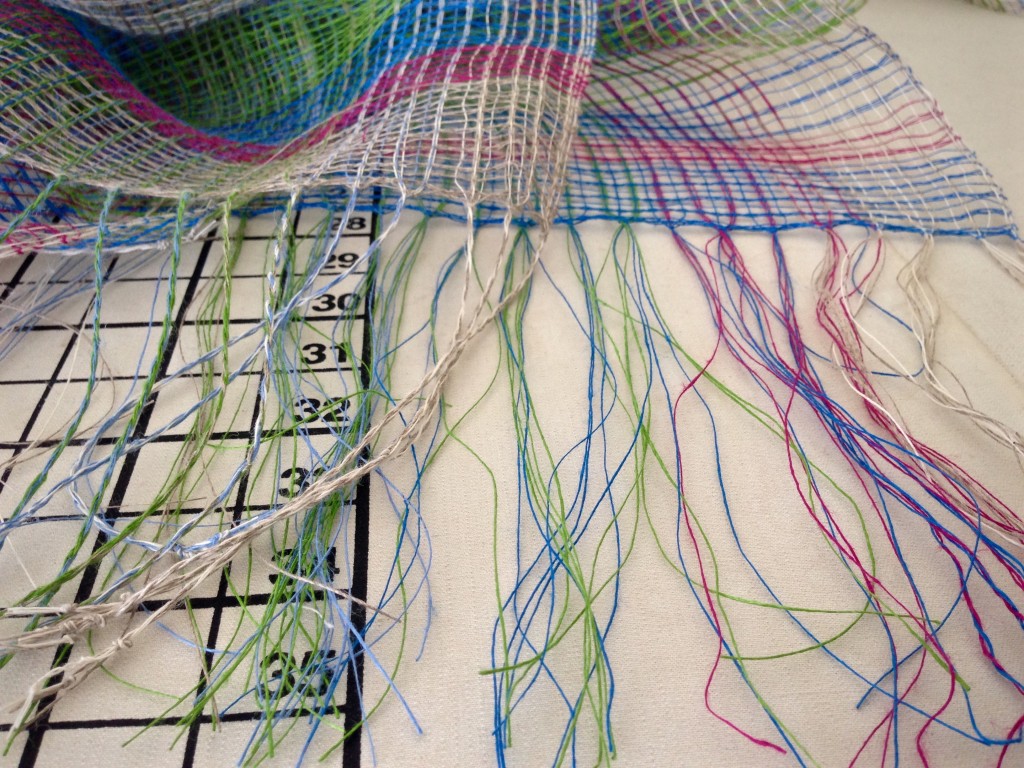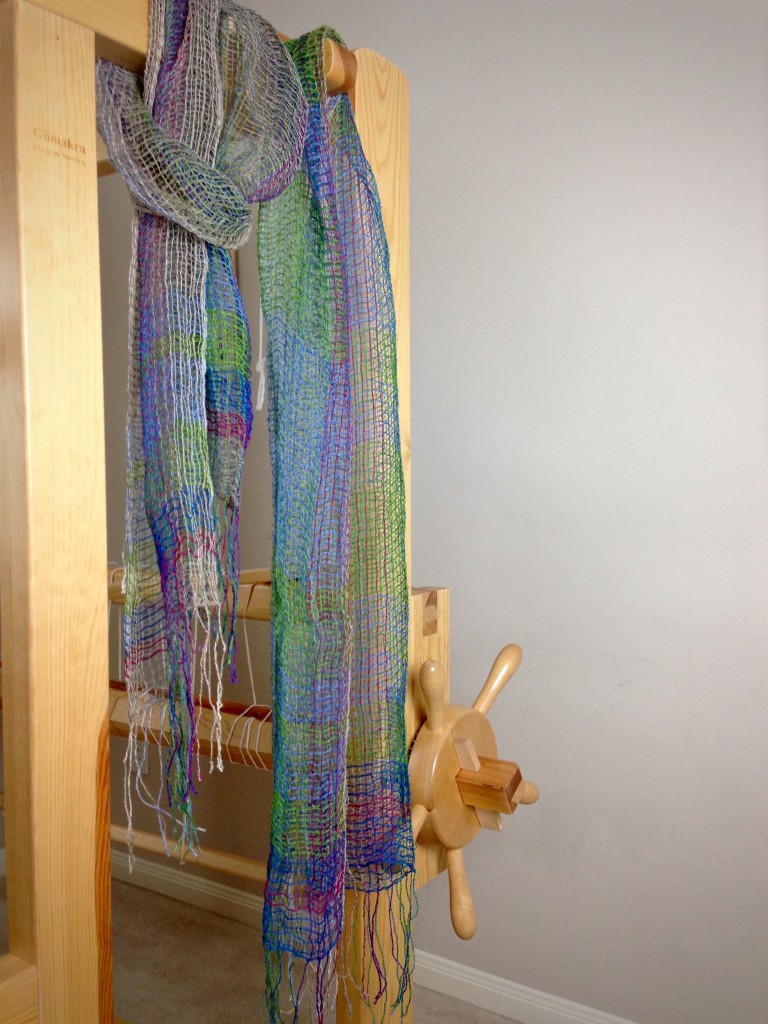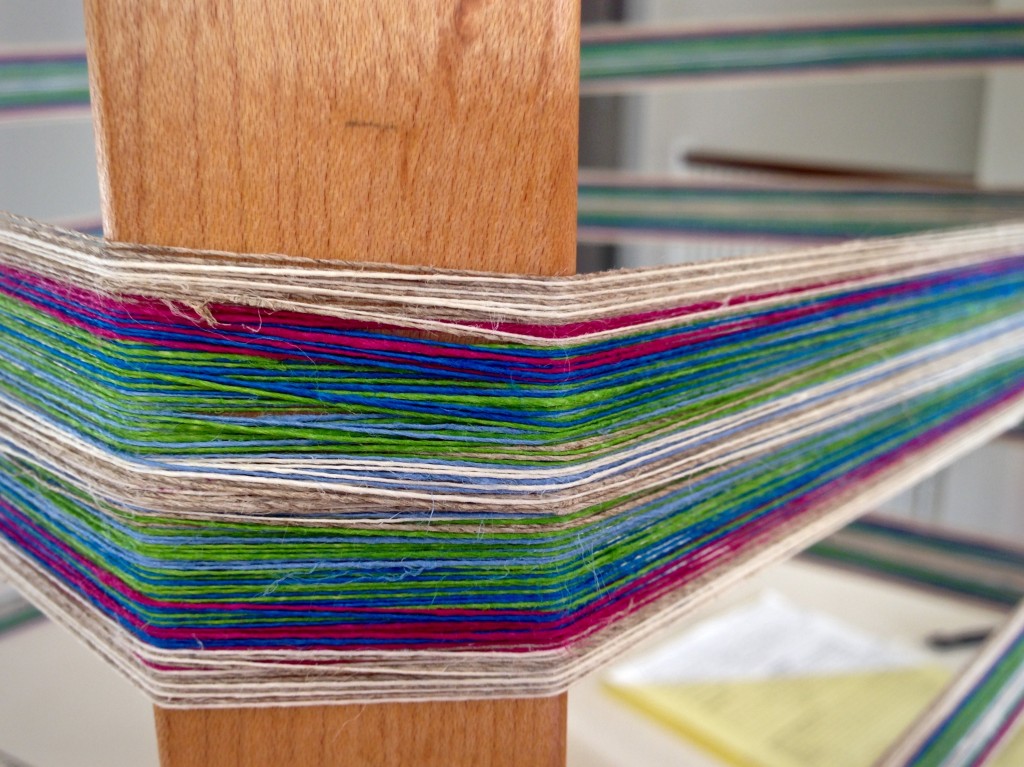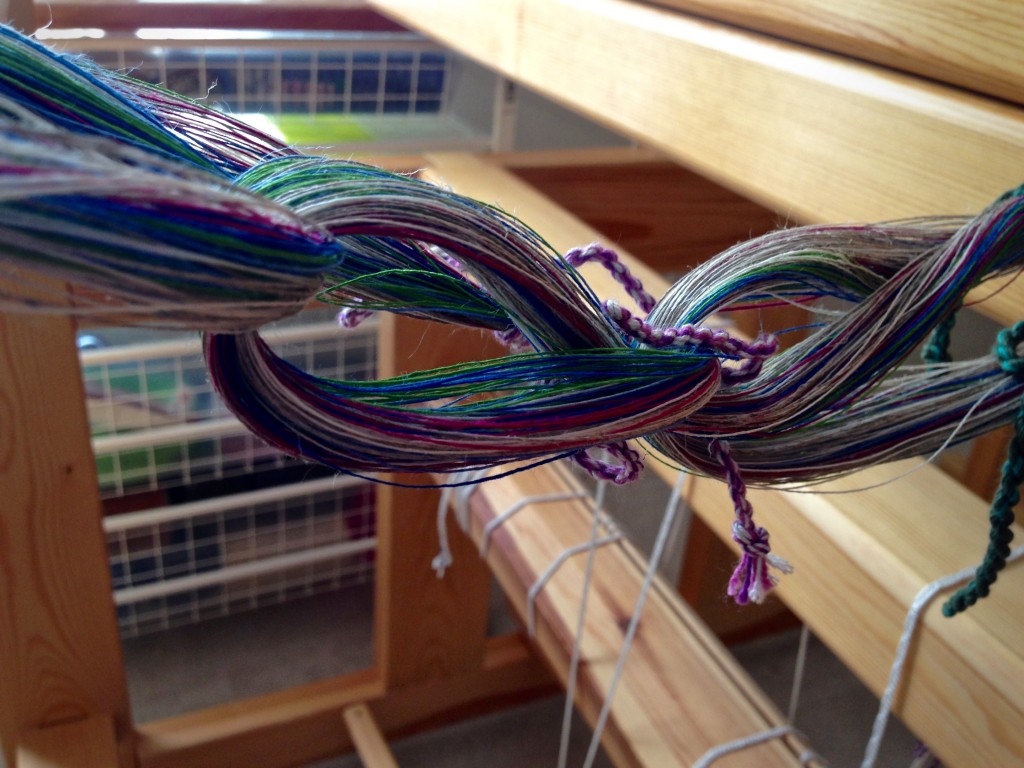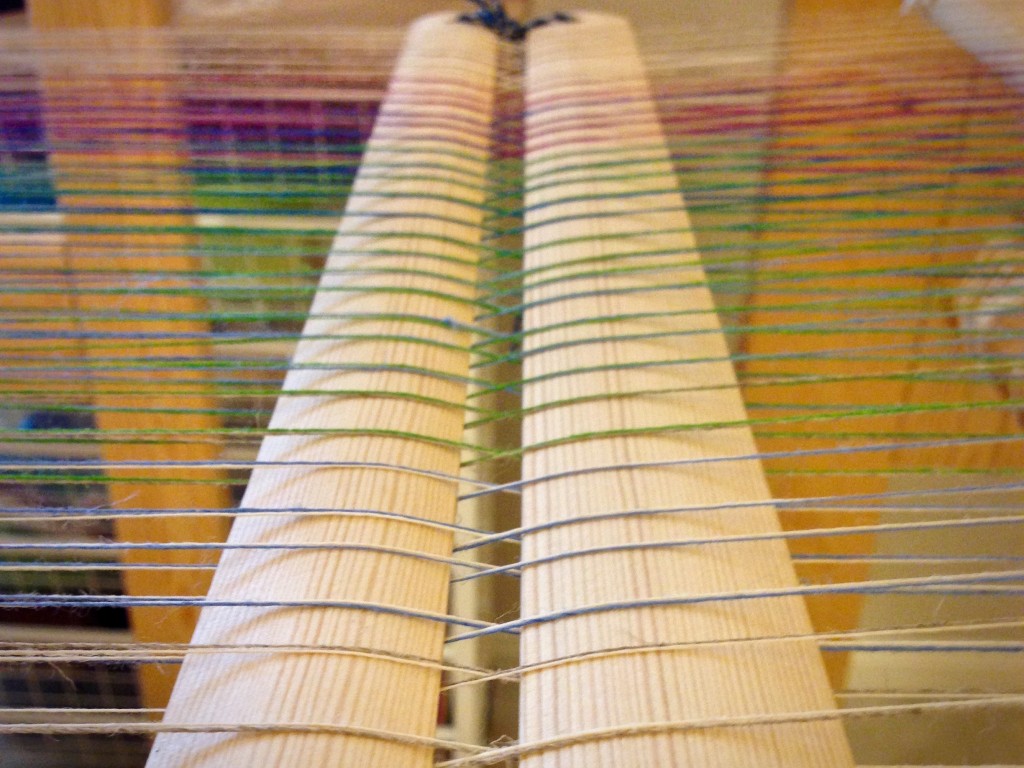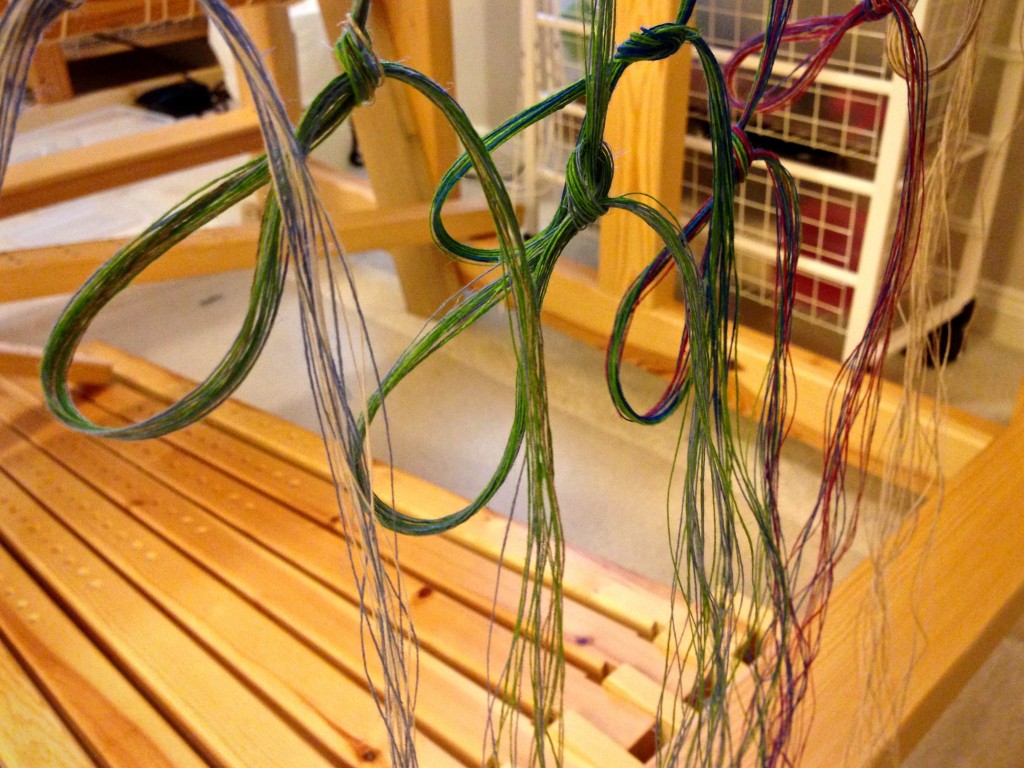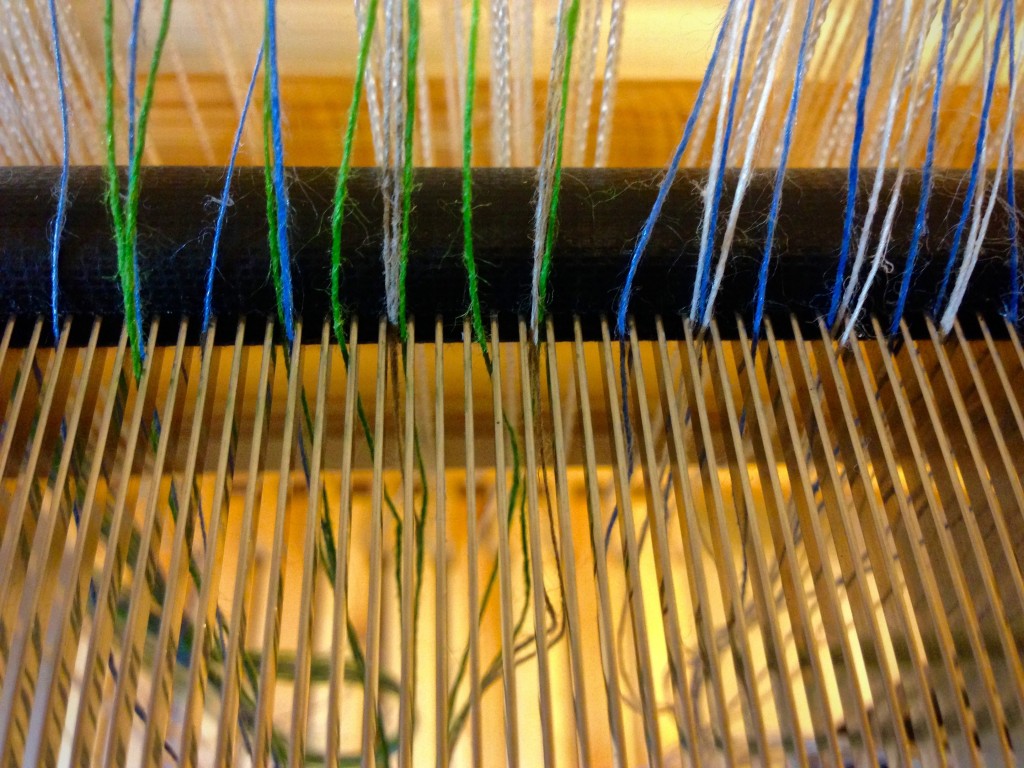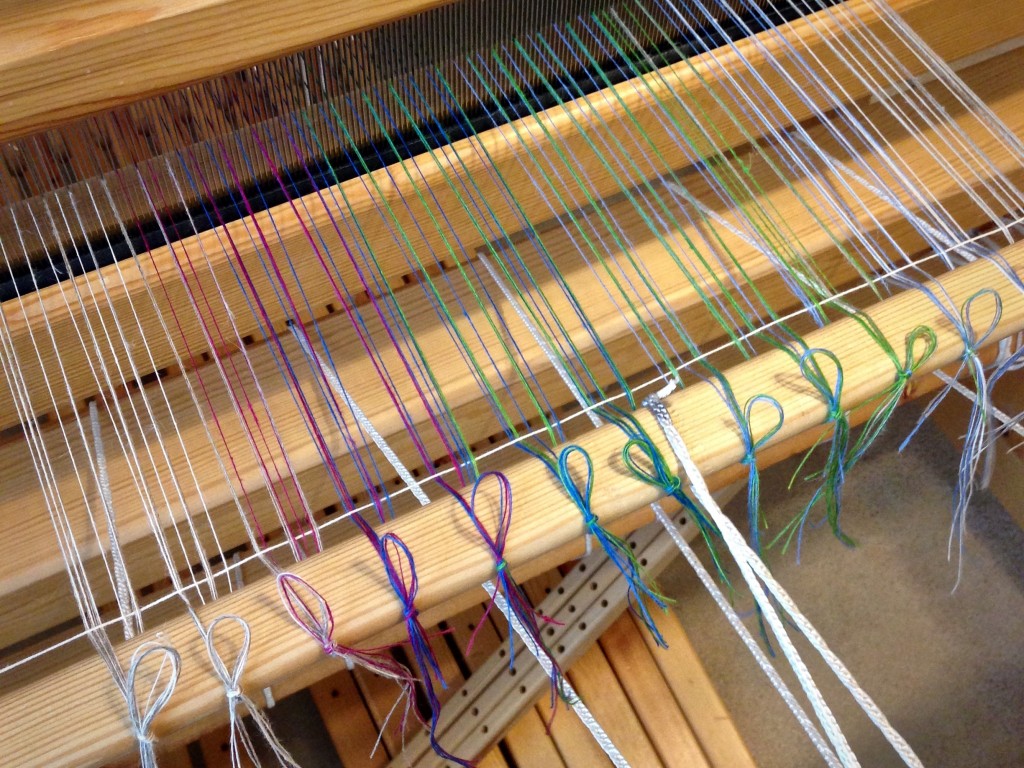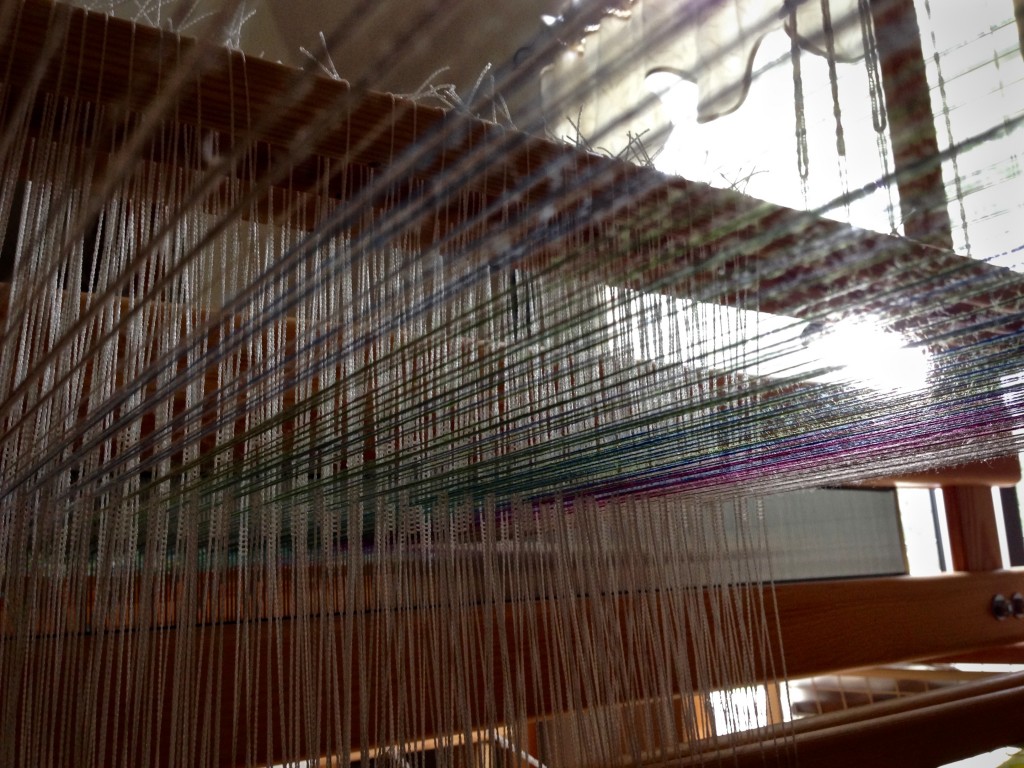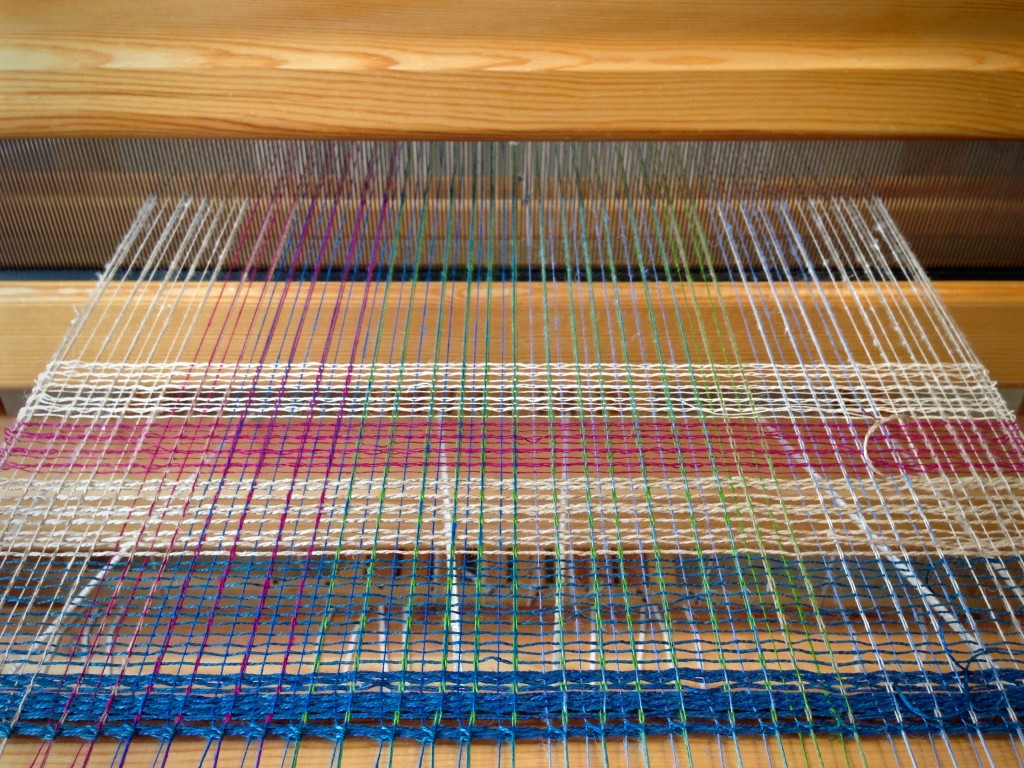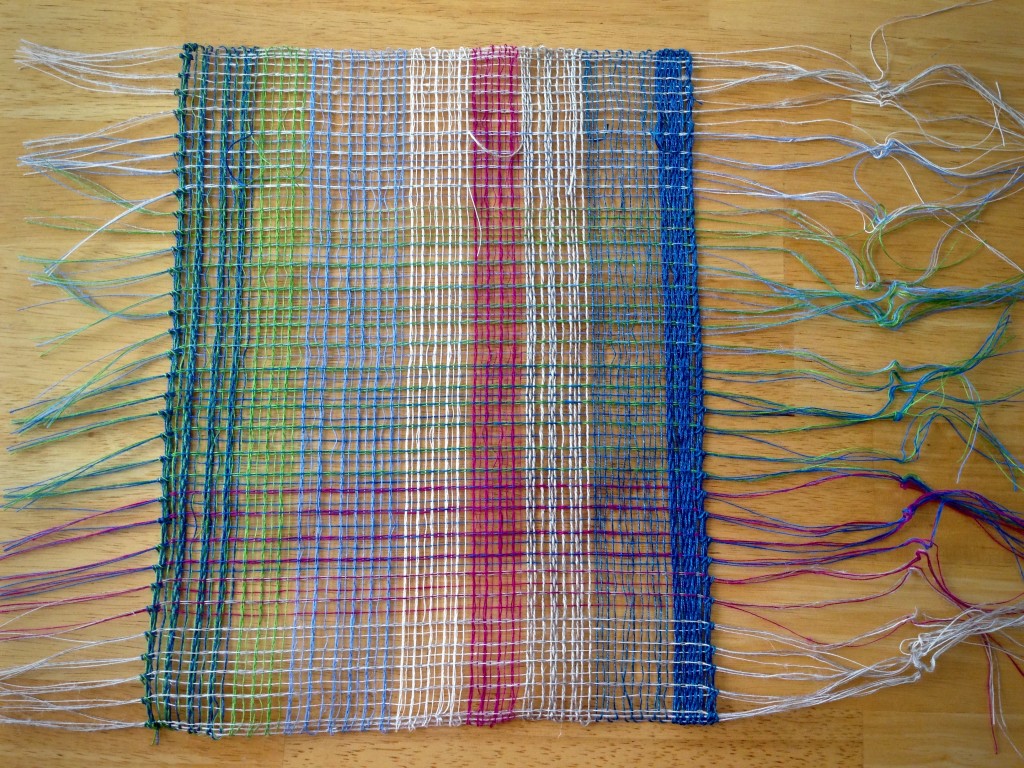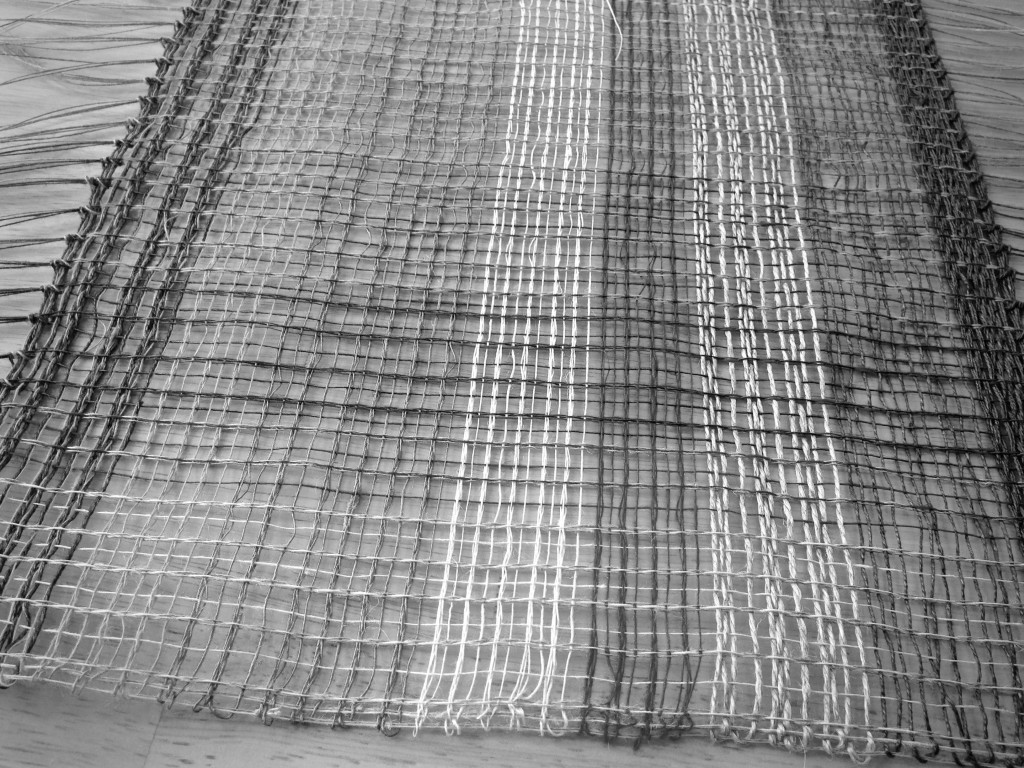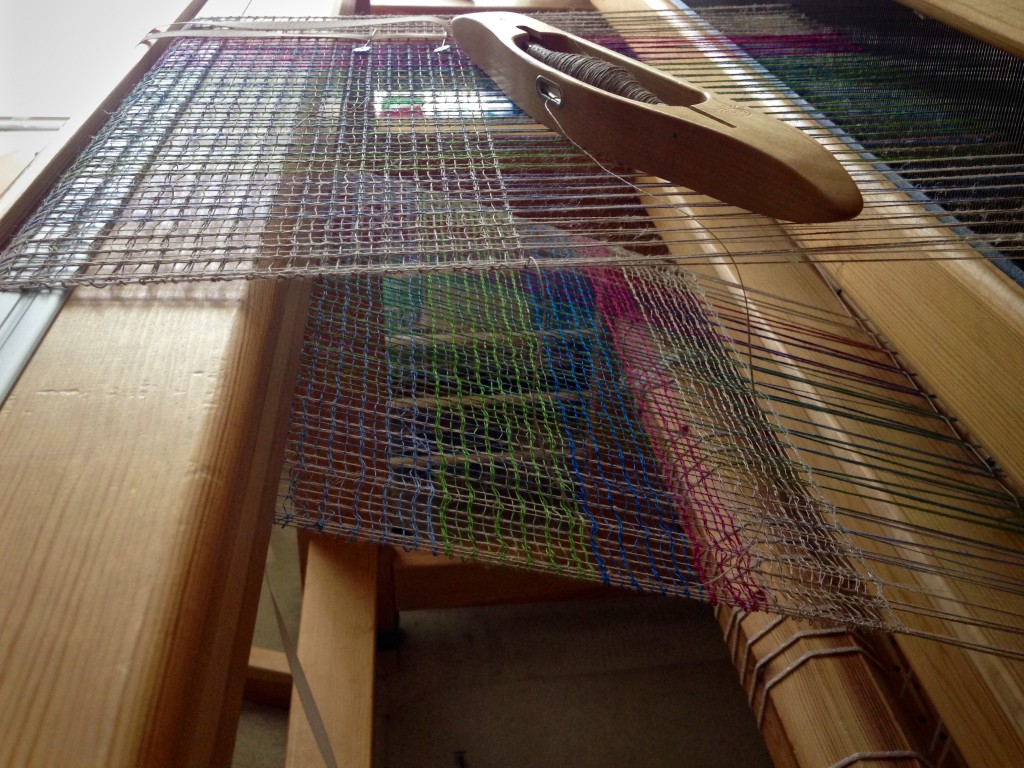Plain weave has never been this interesting! I am painting and stamping the warp on the loom. Imagine applying colors onto the warp between the shafts and the beater! Weaving on the printed warp produces lovely subdued woven images. And, I had forgotten how fast two treadles and one shuttle can be. After having slowly woven many rag rugs, plain weave feels like a speedboat ride now.
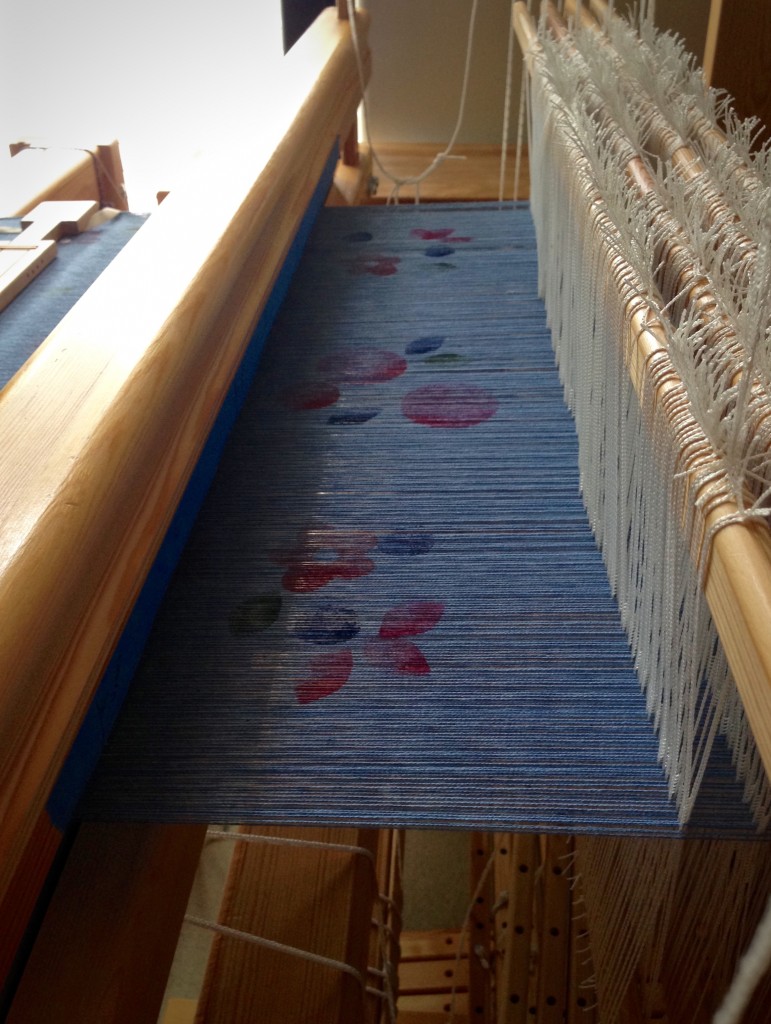
The only problem is, I don’t like the mess. Paint is messy, and I am not fond of getting my hands dirty. Yes, I wear gloves when painting, but there’s the sink, the carpet, and the loom to think about, too. No, I don’t like the mess.
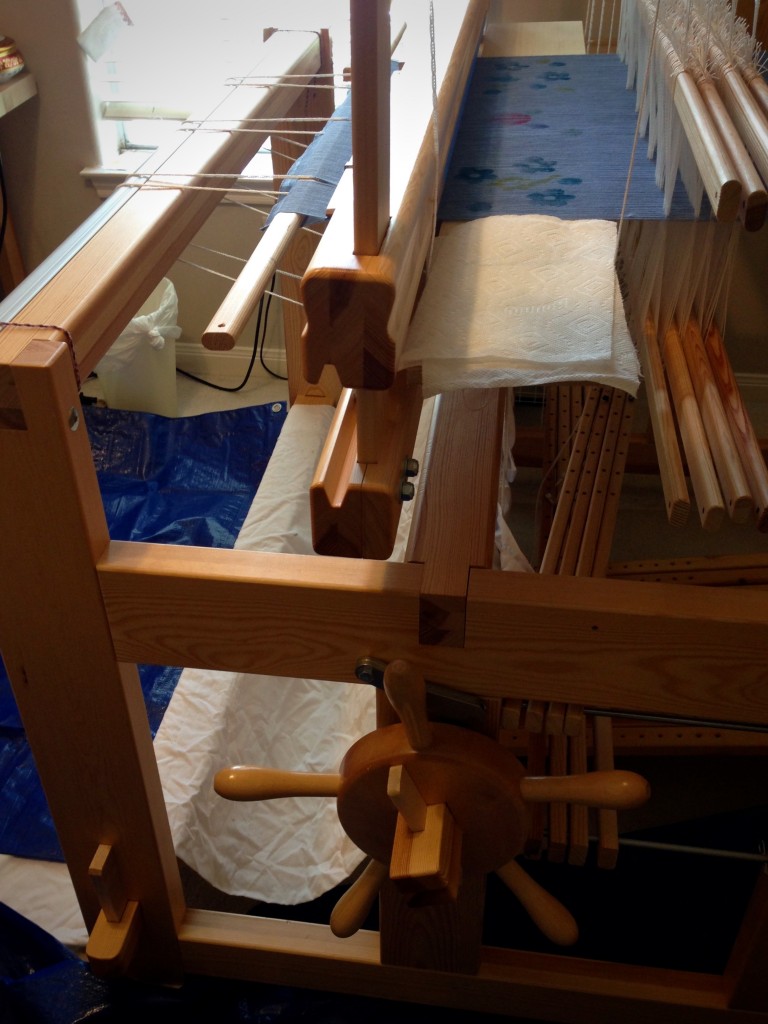
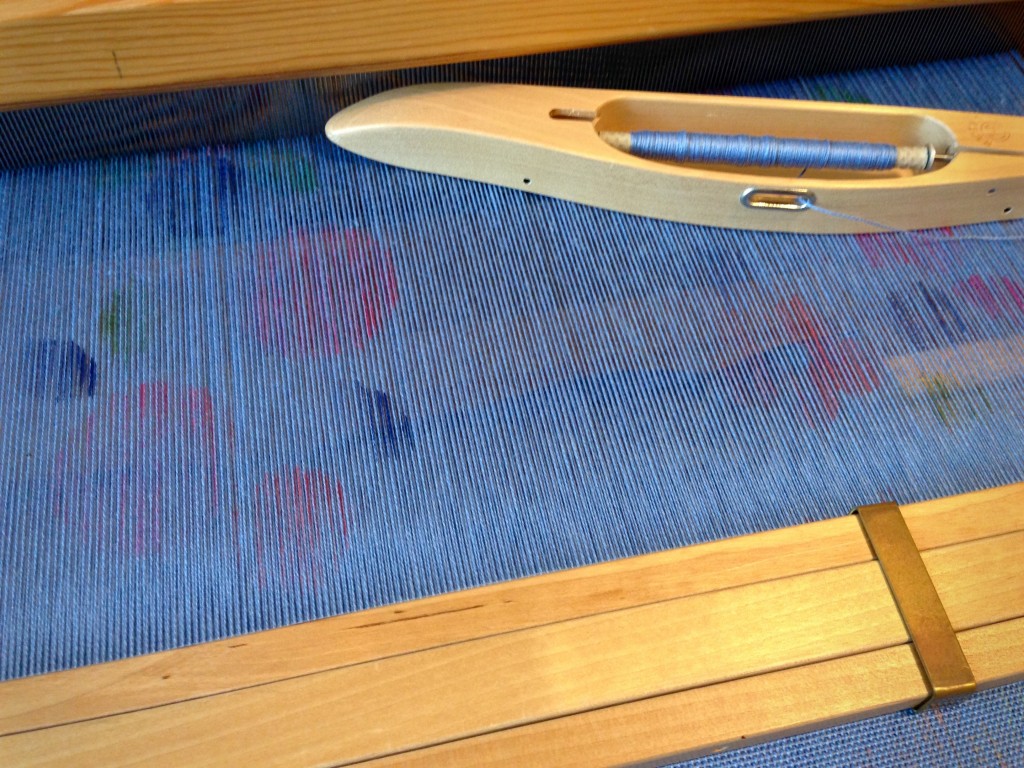
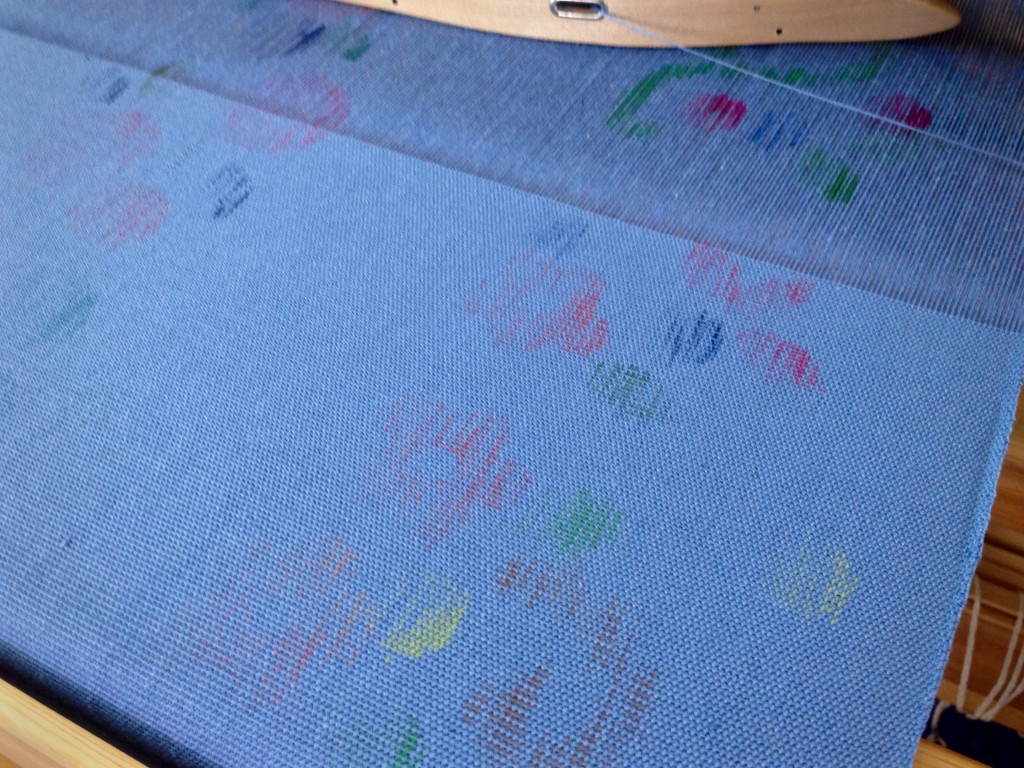
Have you ever been in a mess in life? I have. Others see the pretty fabric you produce, but never see the mess behind the scenes. Appeal to the one who can help. There is one who sees the mess, but loves us anyway. When we appeal to God as Shepherd, we acknowledge our need, and that we want him to lead us–even through the mess. Then, the fabric that is produced has beauty that is truly woven in.
May you enjoy creating beauty, despite the mess.
In process,
Karen

